Smoothing Between Chunks
So I've been working on a game in unity and want to expand my world from a 150x150 map into a seemingly infinite procedural world. My plan is to use Perlin Noise as the base and use the different values from 0-1 to determine the terrain type. The issue I'm running into is when I draw out my chunks and offset accordingly my chunks do not line up correctly, which kind of break the illusion of an infinite world.
(seen here)

WorldChunk.cs
using System.Collections;
using System.Collections.Generic;
using UnityEngine;
using System;
using Unity.Mathematics;
[System.Serializable]
public class WorldChunk
{
public int2 Position;
public int[,] Data;
public float[,] Sample;
public WorldChunk(int chunkSize = 16){
Data = new int[chunkSize, chunkSize];
Sample = new float[chunkSize, chunkSize];
}
}
WorldGenerator.cs
using System.Collections;
using System.Collections.Generic;
using UnityEngine;
using System;
using Unity.Mathematics;
public class WorldGenerator : MonoBehaviour
{
// Base World Data
public int ChunkSize = 75;
public string Seed = "";
[Range(1f, 40f)]
public float PerlinScale = 10f;
// Pseudo Random Number Generator
private System.Random pseudoRandom;
// Chunk Data Split into Sections (Each Chunk having Coords (x, y))
public Dictionary<string, WorldChunk> chunks = new Dictionary<string, WorldChunk>();
//============================================================
// Set Warm-Up Data
//============================================================
private void Awake() {
// Get/Create Seed
if (Seed == ""){
Seed = GenerateRandomSeed();
}
// Get Random Number Generator
pseudoRandom = new System.Random(Seed.GetHashCode());
// Using to Clear while Making Test Adjustments
chunks.Clear();
// Generate Starting Chunk
for (int x = -1; x <= 1; x++)
{
for (int y = -1; y <= 1; y++)
{
// Draw Test Chunks
GenerateChunk(x, y);
}
}
}
//============================================================
// Generation Code
//============================================================
// ===
// Create New Chunks
// ===
public void GenerateChunk(int x, int y){
// Set Key to use
string key = $"{x},{y}";
// Check if key exists if not Generate New Chunk
if (!chunks.ContainsKey(key)){
// Add Chunk, Set Position in chunk grid (for calling and block data later), Then Generate data
chunks.Add(key, new WorldChunk(ChunkSize));
chunks[key].Position = new int2(x, y);
GenerateChunkData(chunks[key]);
}
}
// ===
// Fill Chunks with Perlin Data
// ===
private void GenerateChunkData(WorldChunk chunk){
// Set Offsets
float xOffset = (float)chunk.Position.x * ChunkSize;
float yOffset = (float)chunk.Position.y * ChunkSize;
// Set Data to Chunk
for (int x = 0; x < ChunkSize; x++)
{
for (int y = 0; y < ChunkSize; y++)
{
// Get Perlin Map
float px = (float)(x) / ChunkSize * PerlinScale + xOffset;
float py = (float)(y) / ChunkSize * PerlinScale + yOffset;
// Set Temp Sample For Testing (This will change for Map Data (Hills and Water) later)
chunk.Sample[x,y] = Mathf.PerlinNoise(px, py);
}
}
}
// ===
// Generate Random Seed of Length
// ===
private string GenerateRandomSeed(int maxCharAmount = 10, int minCharAmount = 10){
//Set Characters To Pick from
const string glyphs= "abcdefghijklmnopqrstuvwxyz0123456789";
//Set Length from min to max
int charAmount = UnityEngine.Random.Range(minCharAmount, maxCharAmount);
// Set output Variable
string output = "";
// Do Random Addition
for(int i=0; i<charAmount; i++)
{
output += glyphs[UnityEngine.Random.Range(0, glyphs.Length)];
}
// Output New Random String
return output;
}
//============================================================
// Draw Example
//============================================================
private void OnDrawGizmos() {
// Do this because I'm lazy and don't want to draw pixels to generated Sprites
Awake();
// For Each WorldChunk in the chunk Data
foreach (WorldChunk c in chunks.Values)
{
// Check if it exists (Foreach is stupid sometimes... When live editing)
if (c != null){
// Get World Positions for Chunk (Should probably Set to a Variable in the Chunk Data)
Vector3 ChunkPosition = new Vector3(c.Position.x * ChunkSize, c.Position.y * ChunkSize);
// For Each X & For Each Y in the chunk
for (int x = 0; x < ChunkSize; x++)
{
for (int y = 0; y < ChunkSize; y++)
{
// Get Cell position
Vector3 cellPos = new Vector3((ChunkPosition.x - ChunkSize/2f) + x, (ChunkPosition.y - ChunkSize/2f) + y);
// Get Temp Sample and set to color
float samp = c.Sample[x,y];
Gizmos.color = new Color(samp, samp, samp);
// Draw Tile as Sample black or white.
Gizmos.DrawCube(cellPos, Vector3.one);
}
}
// Size for Cubes
Vector3 size = new Vector3(ChunkSize, ChunkSize, 1f);
// Set Color Opaque Green
Gizmos.color = new Color(0f, 1f, 0f, 0.25f);
// Draw Chunk Borders (Disable to show issue)
// Gizmos.DrawWireCube(ChunkPosition, size);
}
}
}
}
I would like to point out when I use:
// Get Perlin Map
float px = (float)(x + xOffset) / ChunkSize * PerlinScale;
float py = (float)(y + yOffset) / ChunkSize * PerlinScale;
instead of
// Get Perlin Map
float px = (float)(x) / ChunkSize * PerlinScale + xOffset;
float py = (float)(y) / ChunkSize * PerlinScale + yOffset;
Everything aligns up correctly but the perlin noise just repeats.
What would be the best way for me to smooth between the chunks so that everything matches up? Is there a better way to write this maybe?
EDIT:
Thanks for the help Draykoon D! here is the updated info and links to the updated scripts on pastebin if anyone needs them!

Here is the update code for anyone who wants it: ** WorldGenerator.cs**
** WorldGenerator.cs**
Hope that helps!